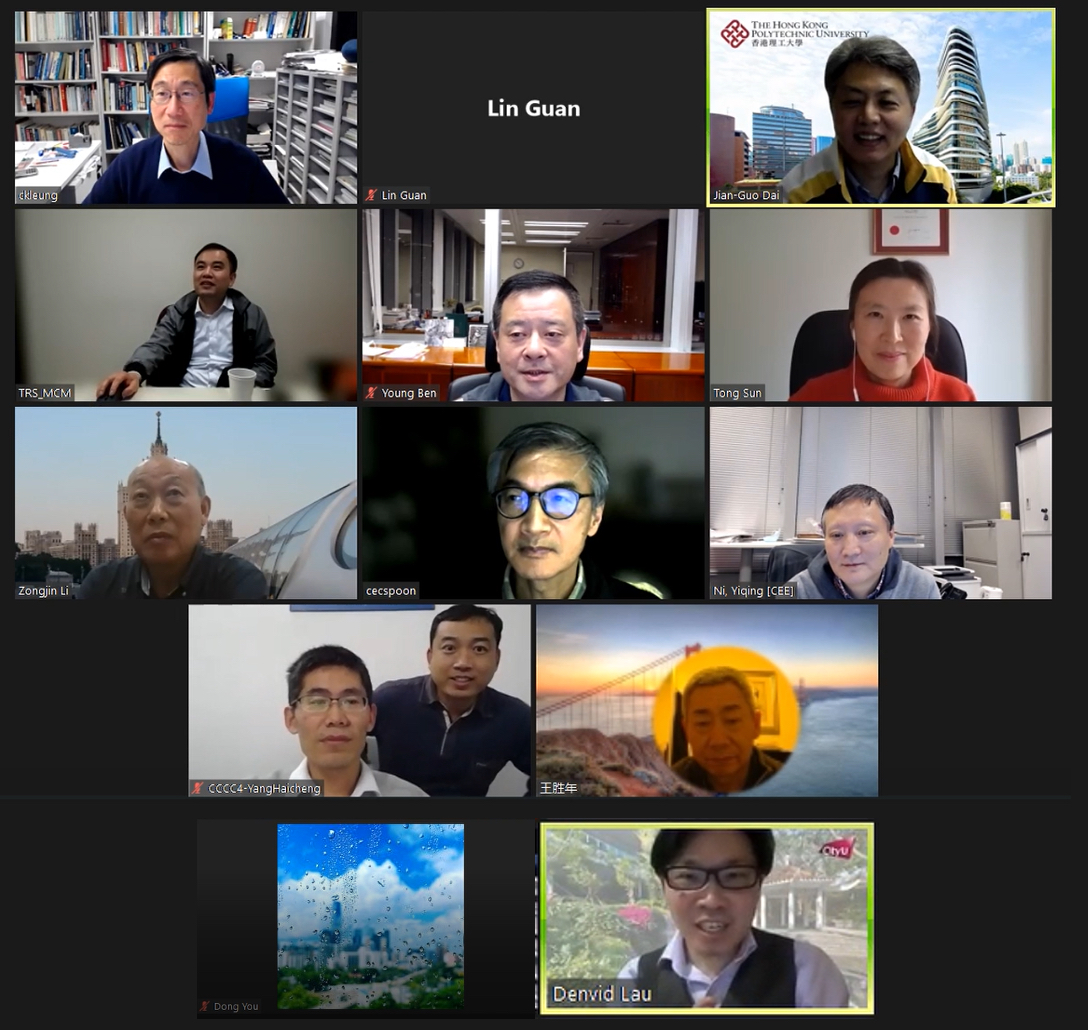suggested that if a larger amount of FRP bars is used, it may drive down the
construction cost of the subsequent Lai Chi Chong Pier.
Mr. Ricky Wong also mentioned that CEDD is working with the PolyU team
on another demonstration project on the use of FRP and normal concrete (not
SSC) for the reconstruction of Tai Po Kau Tide Gauge Station.
Chair Ir. Hon asked how the demonstration project at the Lai Chi Chong Pier
Project may be used as a reference for future projects using FRP and SSC.
Prof. Yu responded with the following four aspects: (1) to demonstrate the
actual structural behaviour by on-site loading tests; (2) to demonstrate the
long-term performance of sensors, materials, and scaled structural members
by parallel on-site exposure tests; and (3) to demonstrate the construction
process; and (4) to demonstrate the overall cost and carbon emissions.
Prof. Yu mentioned that the concrete plant of Gammon at Tsing Yi, with
which the PolyU team previously worked for casting SSC, will be closed by
the end of 2022. Mr. Ricky Wong suggested that CEDD will help to
communicate with a contractor to seek opportunities for batching SSC.
Prof. Yu sought advice on the SSC batching and construction of the Lei Yue
Mun Wave Wall Project. Mr. Ricky Wong responded that CEDD plans to do
concrete batching on-site, and he will confirm the construction method (i.e.,
in-site casting or precasting) with his colleagues after the meeting.
3. Prof. Yu delivered a presentation on other opportunities of demonstration projects.
Prof. Yu proposed several possible applications, including FRP-steel-
concrete double-skin tubular members (DSTMs) for compression members
in piers and bridges, pavements made of FRP and/or SSC, FRP noise barriers,
FRP cables and FRP bridge decks.
Mr. Kwok Tim Ho commented that the possibility of using SSC and FRP in
pavements in Hong Kong is not high because most of the pavements in Hong
Kong use bitumen instead of concrete, and the concrete pavements in Hong
Kong are usually unreinforced.
Mr. Kwok Tim Ho suggested some information should be provided to address
the concerns raised by the colleagues of HyD on the fire resistance and
vibration of the FRP noise barriers. Chair Ir. Hon commented that the idea
was for demonstration projects to mitigate concerns on the innovate use of
new materials. Further discussions between HyD and the PolyU team would
be made in this regard.
Discussions were made on possible applications of FRP in Hong Kong apart
from noise barriers. Prof. Teng suggested considering some small structures,
for which steel corrosion is a critical issue, while fire and structural resistance
are not critical issues. Mr. Edmond Kin Wah Cheung suggested FRP may be
used in sign gantries across roads.
4. Prof. Yu delivered a presentation on the development of local guides/codes.
Prof. Yu suggested two possible ways for developing local guides/codes: (1)
